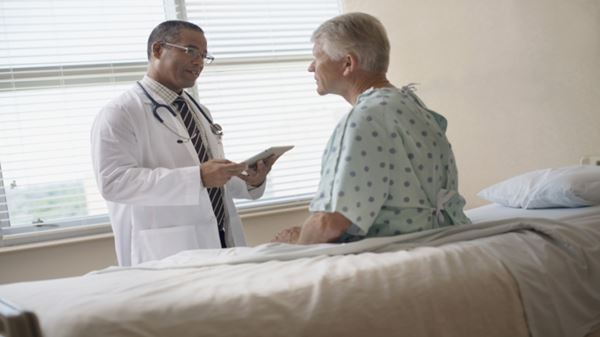My Muscle Hurts. Should I Go to the Doctor?
Many of us have experienced it before. You go to the gym and the morning after your leg muscles are incredibly sore. Or you’ve spent the day lifting heavy boxes, and your arm feels a little tender or doesn’t have the same range of motion.
But should you grab an ice pack and get some rest, or is it time to book an appointment with your doctor? There are a few warning signs to pay attention to that will help you answer this question.
Stay Home or Go to the Doctor?
If you are having soreness after participating in an activity but are still able to participate in most work and daily living activities, treatment at home may be the best approach initially. You can start with the RICE treatment approach through rest, ice, compression, and elevation.
But if you’ve had muscle pain for more than a week, have experienced an acute episode of pain when performing a task, you experience numbness, bruising or swelling at the injury site or you can’t fully move your legs or arms, don’t hesitate to see a doctor. Other warning signs that it’s time for medical attention include redness or swelling that may indicate an infection, high fever along with muscle or joint pain, increased muscle pain after you start taking medication, trouble breathing, and/or muscle weakness.
What Happens When I Go to the Doctor?
Your doctor will obtain your medical history and do a physical exam. Based upon your symptoms, he will most likely order an X-ray along with the possibility of an ultrasound or MRI to get a better view of the muscle and to determine the severity of your injury. Injuries to a muscle or muscle strains typically occur where the muscle connects to the tendon. If you have a muscle strain, you’ll typically experience muscle pain, tenderness, or possible swelling/bruising. These injuries can take several weeks or even several months to heal, depending on the severity. Treatment will include rest, anti-inflammatory medications and applying ice and compression to the injury site to reduce swelling. In addition, physical therapy is often necessary to decrease pain and gradually improve flexibility, strength and endurance to recover from the current injury and hopefully prevent future injuries. Some very severe complete tears where the muscle attaches to the bone may end up requiring surgery if the patient’s symptoms do not improve with non-surgical care.
Sometimes a muscle can instead be injured where its tendon attaches to bone. If a tendon is torn and pulled a certain distance away from the bone, then some of these injuries may require surgical repair of the muscle’s tendon back to the bone. In these cases, there will often be swelling and/or bruising near the area of injury and should prompt immediate visit to a doctor for an evaluation.
How Can I Prevent Future Injury?
Though not every injury is avoidable, you can take some steps to prevent a muscle strain or other injury. In fact, a prior history of muscle injury is the biggest predictor of future injury to the same muscle, so prevention is the key to avoiding all muscle injuries.
If you’re physically active, implement a dynamic warm-up program before and after your workout to properly warm-up and cool-down your muscles. Avoid being sedentary for not only general health but also your bone and joint health. Be careful when you lift heavy objects, too. Always keep your back straight and your knees bent to avoid putting extra pressure on the muscles. And always listen to your body. If something feels uncomfortable or if during activity you feel as though your body is moving or bending in an unnatural way, stop what you’re doing. Paying attention could help you avoid serious injury.
Most muscle injuries won’t require medical treatment in a doctor’s office. Ice, rest, anti-inflammatory medications, compression and elevation can relieve muscle pain and soreness. However, more significant injuries, injuries that do not improve with rest, and injuries in highly competitive athletes will often require more thorough management to streamline recovery and prevent future injuries. If you experience any of the warning signs I’ve outlined above; however, it’s time to see a doctor and to get an evaluation and appropriate imaging.. Doing so could prevent your injury from getting worse, help you return to form a lot sooner and hopefully prevent future re-injuries in the future.
Are you interested in learning more about our specialized orthopedic treatment?
Our doctors will assess your condition by using the latest scanning technology and then prepare a treatment and rehabilitation plan that will address your specific needs. Find your doctor from more than 2,000 specialty and primary care physicians with offices located throughout greater Orlando.
Request an Appointment Today







